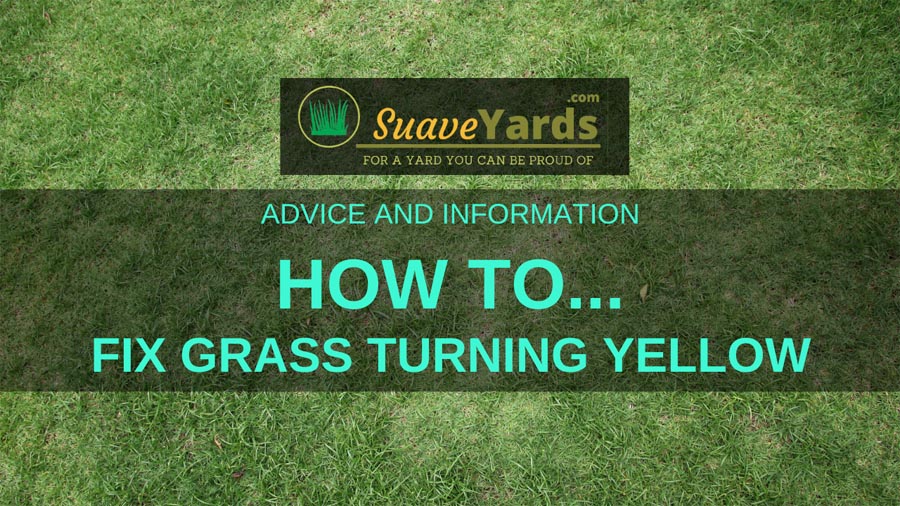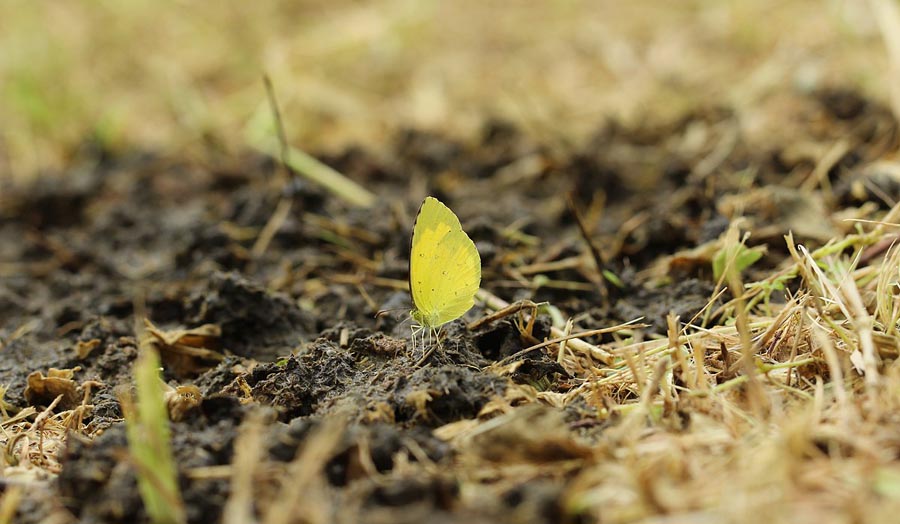
Is your grass turning yellow? Don’t worry. It’s not the end of your “green” dream. There are ways to get it looking lush and bright green again.
Lets find out how to fix grass turning yellow after fertilizing.
Why Is the Grass Turning Yellow?
Before we start enumerating the solutions, let’s first talk about the problem.
What makes the grass turn yellow? It’s actually one indication that the grass is not healthy.
To be more specific
Here are the various reasons why your grass is unhealthy:
1. Not enough nitrogen
Nitrogen is an important nutrient for plants. If you want healthy plants, the above-ground tissue should have about 3% to 4% nitrogen.
This may not sound much but this is actually already a high concentration.
Here’s the deal:
Nitrogen is an essential gas that is actually a vital component for chlorophyll, which gives plants their green color.
Chlorophyll is also very important in the process of photosynthesis, which is one of the important ways wherein plants provide the world some oxygen.
Fact:
Nitrogen is one of three important components of fertilizer along with phosphorus and potassium.
Plants can also get nitrogen in the atmosphere but it’s not that much.
Now that we’ve established its importance
When your lawn isn’t getting enough nitrogen, then it turns to yellow. After all, nitrogen is what makes plants, like grass, turn green.
This element will also help prevent weeds from invading your lawn while also keeping it dense.
2. Water – not enough or too much
We know that grass needs water. That’s basic knowledge. However, you also cannot provide them with too much water or they will drown.
Here’s how you look at it:
When the grass doesn’t have enough water, it becomes parched. Then it turns yellow.
When it has more water than it needs, then the grass roots will drown and the soil won’t get enough oxygen. Then it turns yellow.
3. Soil compaction
When there is too much traffic on the lawn, whether it is foot traffic or vehicular traffic, the soil will become too dense and compact.
The same thing will happen when you overwater your grass or when there is heavy downpour and you don’t have enough drainage in your lawn.
The thing is
When there is soil compaction, there is not enough pathway in the soil for water, oxygen, and nutrients to penetrate.
This will result in the yellowing of your grass.

4. Dog urine
Many people love dogs and these lovable pets actually need to have some play time. So, if you have a lawn in the house, it’s essential that these dogs get to play there.
Sometimes, you can’t stop them from peeing on the lawn.
It’s actually not that bad
However, if the dog makes a habit of that, chances are the grass will start to turn yellow. This is because the dog’s urine contains a lot of salt.
A large concentration of salt could actually kill grass.
5. Chemicals
You might be spraying some weed killer or herbicide and some of it has spilled. That could really kill your grass.
It also happens when you overdo your application of chemicals. So, always be careful when you’re applying chemicals.
6. Pests
There are bugs and insects that would not be great for the grass. If there is an infestation, then your green grass will certainly turn yellow.
7. Lack of fertilizer
Fertilizer is the plants’ food. Plants need it to be healthy.
So, if you did not fertilize or you did not apply the right amount of fertilizer, the grass will turn green.
You have to remember
Nitrogen is an important ingredient of the fertilizer, and it is necessary in order for the plants to be green.
8. Overfertilization
You fertilize your grass because you want it to be healthy. You want the grass to grow lush and green.
Fertilizers, in fact, make your plants green, among many of their other benefits.
However
There’s a common saying: Too much of a good thing can be bad.
That’s particularly true with the application of fertilizers. When you put too much, your plants could turn yellow.
Here’s the deal:
This doesn’t happen so much with organic fertilizers, although it still could. This is mostly a problem with synthetic fertilizers.
Remember, synthetic fertilizers are made of chemicals. You cannot have too much chemicals applied on your grass, as we earlier explained.
Too much fertilizer could burn your grass.
Good news:
You could fix fertilizer burn!

How to Fix Grass Turning Yellow After Fertilizing
Fertilizer, which is basically plant food, is good for your grass. However, too much could burn it. That’s why it turns yellow.
At least
Turning yellow doesn’t mean it’s dead. Yellowing grass can still be saved.
With the right care, your yellow grass can become healthy again. It’s really the brown grass that you should be worried about, especially when it hardens.
Here are important steps to turning your yellow grass back to green:
Stop applying fertilizer immediately!
This is just the sensible thing to do. If your plant is turning yellow, stop applying fertilizer.
Also, this should be a reminder for you to read the instructions properly before applying fertilizer. You should follow the instructions to a T.
If you already stopped, then you have to wash the fertilizer off. That leads us to the next fix:
Water adequately
When something is burning, you basically stop it with water. That’s also the logic in this case.
As soon as you spot areas with yellow grasses, water it adequately. This is a way to prevent further deterioration.
Continue doing this
Water the area generously and daily for at least a week. This is a way to wash off the chemicals that have penetrated your grass.
Water in the morning.
Why?
This allows your plants, in general, to have a supply of water with them for the entire day, especially when sunlight is at its peak.
It’s also important that you do it before the sun becomes too hot because you don’t want the water to evaporate easily.
Remove fallen leaves & grass clippings
Grass clippings are actually natural fertilizers. They decompose and just add nutrients to the grass.
However, they can also become breeding spots for pests. They can also carry diseases.
In other words
If your grass is starting to yellow, you have to be more diligent about raking your fallen leaves and grass clippings.
Aerate the lawn
You want to revive the burnt grass, so you have to make sure it is getting much-needed oxygen.
Aerating the lawn is one way to make sure it is circulating especially in the grass roots. It is also important that there is proper drainage for your lawn especially since you need to adequately water the plants to make it healthy again.
Mow the lawn
When the grass is too tall, chances are the blades will be covering the shorter grass or the roots from the sun.
It is important that the grass will also get adequate sunlight, which is essential for their survival.
Fertilize appropriately
If your grass is starting to go back to its normal color or even better, then that means you have successfully revived it.
Now, the next step is to ensure that there will be no yellowing of grass again. To ensure that this will happen, you have to follow the right way of fertilizing your grass.
Know what your grass needs
There are different types of grass, so there are also different ways to care for them. It follows they need different kinds of fertilizers and would need different quantities as well.
Make sure you have the appropriate type of fertilizer with the right composition.
Take care of your lawn
You have to make sure the mentioned ways that will make the grass turn yellow are avoided. This means that you have to limit foot traffic and discourage dogs from peeing on the lawn.
At the same time, you have to prevent soil compaction as well as under or overwatering and under and overfertilization.

Summary
The lawn is one of the best parts of the home. It beautifies your entire property and it’s an area where you can bond with the family. You can play games on the lawn or you can have a picnic. You can also allow your pets to play in the yard.
However, if parts of the lawn start to yellow, it’s not a good thing for a variety of reasons. For one, it would damage the aesthetics. Two, there could be a major reason for it. One of those reasons is the improper application of fertilizer.
So, how to fix grass turning yellow after fertilizing? You have to know the root problem in order to identify the proper solution.
Useful Resources
- What Makes Your Grass Yellow and How Do I Fix It? – Family Handyman
- Lawn Care Calendar: What You Should Be Doing to Your Lawn Right Now – Daily Express
- How to Take Care of Your Lawn – WikiHow

